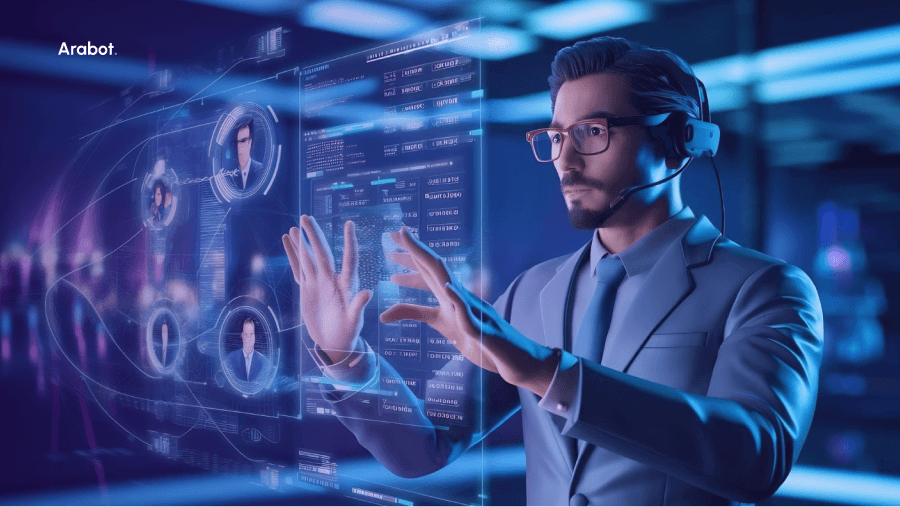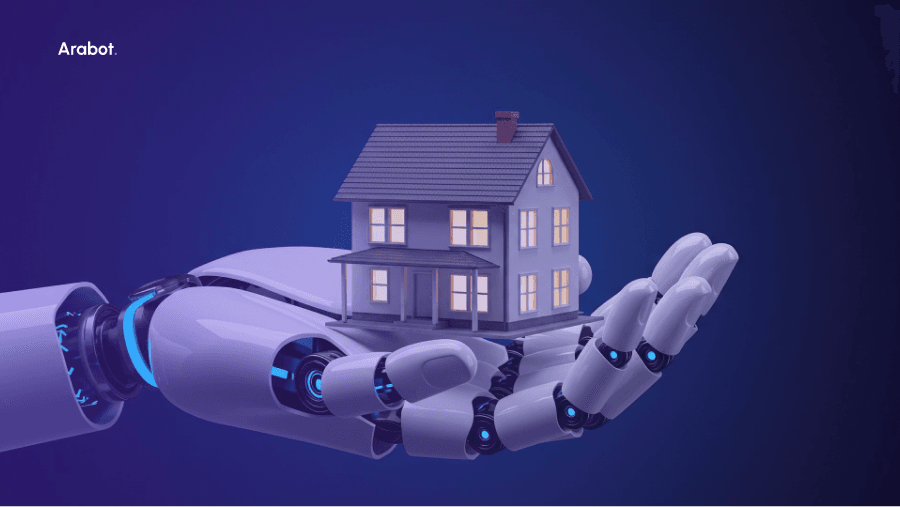Tech
How to Make Sure There's a Smooth Handoff Between Human and AI Customer Service Agents

The customer journey is no longer a linear path. Today's consumers crave convenience and expect brands to be readily available across multiple channels. This is where conversational commerce, specifically messaging, takes center stage. A staggering 60% of consumers now prefer messaging over traditional methods like email or phone calls to connect with brands (Spectrm, 2023). This shift demands a customer service strategy that seamlessly blends the efficiency of AI chatbots with the personalized touch of live agents.
This blog post will talk about the critical role of a smooth handoff between AI and human interaction in delivering exceptional customer experiences and ultimately, driving sales. We'll go into the benefits of both chatbots and live agents, explore how they can work together seamlessly, and provide actionable best practices to optimize your handoff process.
Chatbots and Live Agents
Chatbots are virtual assistants trained to handle routine customer inquiries. Their biggest strengths lie in availability (24/7 support), scalability (handling multiple conversations simultaneously), and efficiency (automating repetitive tasks).
Live agents, on the other hand, excel in addressing complex queries that require empathy, critical thinking, and personalized problem-solving.
The key to a successful customer service strategy lies in combining these strengths. A seamless handoff ensures customers receive the right level of support at the right time. Imagine a scenario where a customer initiates a conversation with a chatbot about a product return. The chatbot efficiently gathers relevant details and verifies the return policy. If the situation requires further clarification or a nuanced solution, the chatbot can seamlessly connect the customer with a live agent, who has access to the entire conversation history for a smooth continuation. This eliminates frustration and ensures a faster resolution.
Role in Customer Engagement
Chatbots go beyond just routing inquiries. They can be powerful tools for customer engagement across various touchpoints.
Here's how:
- Automating Repetitive Queries: Freeing up live agents to tackle complex issues that require human expertise.
- Educating Customers and Answering FAQs: Chatbots can provide instant answers to frequently asked questions, reducing customer wait times and frustration.
- Collecting Declared Customer Data: Conversations with chatbots create a treasure trove of valuable data about customer preferences and buying habits.
- Personalizing Experiences and Offers: By analyzing this data, businesses can tailor future interactions and offers to individual customer needs.
- Retargeting Customers with Automated Campaigns: Chatbots can nurture leads and re-engage dormant customers with targeted messages.
- Driving Sales with Recommendations: AI-powered chatbots can analyze customer data and recommend relevant products or services, increasing sales opportunities.
Seamless Integrations
Creating a truly seamless customer experience requires robust integrations. These integrations allow chatbots to connect with the platforms customers frequent, such as Facebook Messenger and WhatsApp.
Imagine a customer browsing a product on Instagram. They can initiate a chat with the brand's chatbot directly within the app, ask questions about the product, and be seamlessly connected to a live agent for further assistance if needed. This eliminates the need to switch channels, creating a smooth and convenient experience.
Best Practices
A well-defined handoff process ensures a smooth transition between AI and human interaction. Here are some key practices to follow, illustrated with real-world examples:
- Training Agents and Chatbots: Imagine a company using a chatbot to answer basic questions about product returns. The chatbot is trained to gather details like order number and reason for return. However, if the customer's situation involves damaged goods or a complex return policy, the chatbot should be programmed to recognize these scenarios and seamlessly connect the customer with a live agent. Similarly, live agents should be trained on the chatbot's capabilities and limitations to ensure a smooth continuation of the conversation when taking over.
- Setting Transition Triggers and Rules: Define clear triggers for when a conversation needs to be escalated to a live agent. This could include:
- Complex Questions: If a customer asks a question that requires in-depth knowledge or interpretation beyond the chatbot's capabilities, it's time for a handoff. For instance, a chatbot might not be able to handle a nuanced question about warranty coverage.
- Frustrated Customer Sentiment: Frustrated customers often require a human touch. The chatbot can analyze the conversation for keywords or phrases indicating frustration and trigger a handoff to an agent who can de-escalate the situation.
- Monitoring Metrics: Regularly monitor key metrics to identify areas for improvement within the handoff process. These might include:
- Average Hold Time: How long does a customer wait on average before being connected to a live agent after a handoff? Aim to keep hold times low to maintain customer satisfaction.
- Customer Satisfaction Scores: Conduct surveys or gather feedback after customer interactions to understand their experience with the handoff process.
- Updating FAQ Knowledge Bases: Continuously update your chatbot's FAQ knowledge base to ensure it can address an expanding range of customer inquiries. This reduces unnecessary handoffs and improves first-contact resolution by the chatbot.
Remember: The goal is to create a seamless and intuitive experience for the customer. By using clear handoff triggers, well-trained agents and chatbots, and continuously monitoring the process, you can ensure a smooth transition that leaves customers feeling valued and supported. Beyond the Basics: Advanced Techniques While the above practices lay the foundation, there are advanced techniques to further enhance the handoff experience:
- Real-time Context Sharing: When a handoff occurs, the chatbot can share the entire conversation history and relevant customer data with the live agent in real-time. This equips the agent with context to provide immediate and personalized assistance.
- Automated Workflows: Streamline common customer service tasks through automated workflows triggered by the chatbot. This could involve tasks like sending order confirmations or resetting passwords, freeing up live agents for more complex inquiries.
The Conversational Future of Customer Service
The landscape of customer service is rapidly evolving. Conversational commerce, fueled by the popularity of messaging platforms, demands a shift towards a more dynamic and interactive approach. By embracing a seamless handoff between AI chatbots and live agents, businesses can create a customer service ecosystem that offers the best of both worlds:
- Efficiency and Availability: Chatbots provide 24/7 support, answer routine questions quickly, and automate repetitive tasks, freeing up live agents for complex inquiries.
- Personalized Touch and Empathy: Live agents offer the human touch essential for building rapport, resolving intricate issues, and de-escalating frustrated customers.
This synergy between AI and human interaction fosters exceptional customer experiences that translate into:
- Increased Customer Satisfaction: Seamless handoffs and personalized interactions lead to happier and more loyal customers.
- Reduced Customer Effort: Customers can easily access the support they need, minimizing time spent navigating complex menus or waiting on hold.
- Improved Agent Efficiency: Live agents spend less time on repetitive tasks and more time providing high-value, personalized support.
- Enhanced Sales Opportunities: AI-powered recommendations and proactive engagement by chatbots can drive sales conversations and conversions.
Investing in the Future
Building a robust and scalable customer service ecosystem requires the right tools and expertise. Consider partnering with vendors who offer comprehensive solutions encompassing:
- Advanced Chatbot Development: Platforms that enable the creation of sophisticated chatbots equipped with Natural Language Processing (NLP) to understand complex customer queries and intent.
- Omnichannel Support: Solutions that facilitate seamless integration of your chatbots with various messaging platforms, ensuring consistent and convenient experiences across channels.
- Data-Driven Insights: Tools that provide valuable data analytics on chatbot performance and customer interactions. These insights help you identify areas for improvement, optimize chatbot training, and personalize future interactions for enhanced customer satisfaction.
By embracing a conversational approach and leveraging the power of AI-powered handoffs, you can unlock the full potential of customer service and empower your business to thrive in the ever-evolving landscape of communication.
Learn how arabot can help you today!
© 2025 copyright Arabot. All rights reserved.
 Insurance
Insurance Healthcare
Healthcare Automative
Automative Hospitality
Hospitality Banking
Banking Government
Government Telecommunication
Telecommunication Education
Education Human Resources
Human Resources
